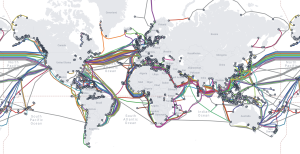GEO Satellites: Introduction to the Technology
GEO satellites, or Geostationary Earth Orbit satellites, are a type of satellite that orbits the Earth at an altitude of approximately 36,000 kilometers. At this altitude, the satellite’s orbital period matches the Earth’s rotational period, allowing it to remain stationary in the sky relative to a fixed point on the Earth’s surface. This unique characteristic makes GEO satellites ideal for a variety of applications, including telecommunications, weather forecasting, and navigation.
How GEO Satellites Work
GEO satellites are equipped with transponders that receive and retransmit signals to and from Earth stations. The signals are transmitted to the satellite through an uplink, and the satellite then amplifies and retransmits the signals back to Earth through a downlink. The satellite’s antennas are designed to receive and transmit signals in specific frequency bands, such as C-band, Ku-band, or Ka-band. The choice of frequency band depends on the application and the requirements of the system.
Applications of GEO Satellites
GEO satellites have a wide range of applications, including telecommunications, broadcasting, weather forecasting, and navigation. In the telecommunications sector, GEO satellites are used to provide broadband internet access, mobile communications, and fixed satellite services. They are also used for broadcasting, allowing television channels to reach a global audience. In addition, GEO satellites are used for weather forecasting, providing images and data that help meteorologists predict weather patterns and track severe weather events.
Advantages and Challenges of GEO Satellites
GEO satellites have several advantages, including global coverage, high bandwidth, and reliability. However, they also face several challenges, such as signal latency, interference, and the risk of satellite failures. Signal latency occurs because of the distance between the Earth and the satellite, which can cause delays in communication. Interference can occur when signals from other satellites or sources overlap with the satellite’s signal, causing errors and disruptions. Satellite failures can also occur due to technical issues or space debris, which can have significant consequences for the system.
Future Developments in GEO Satellites
Despite the challenges, GEO satellites continue to play a vital role in modern telecommunications. The development of new technologies, such as high-throughput satellites and satellite constellations, is expected to improve the performance and capabilities of GEO satellites. High-throughput satellites are designed to provide higher bandwidth and faster data rates, while satellite constellations involve multiple satellites working together to provide global coverage and redundancy. These developments are expected to enable new applications and services, such as 5G networks and IoT connectivity.



